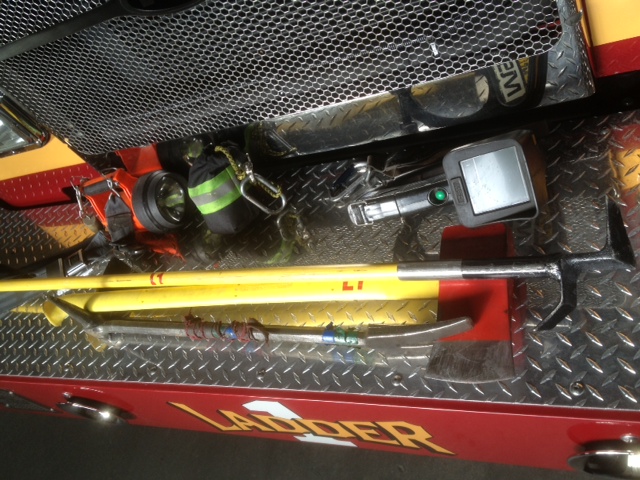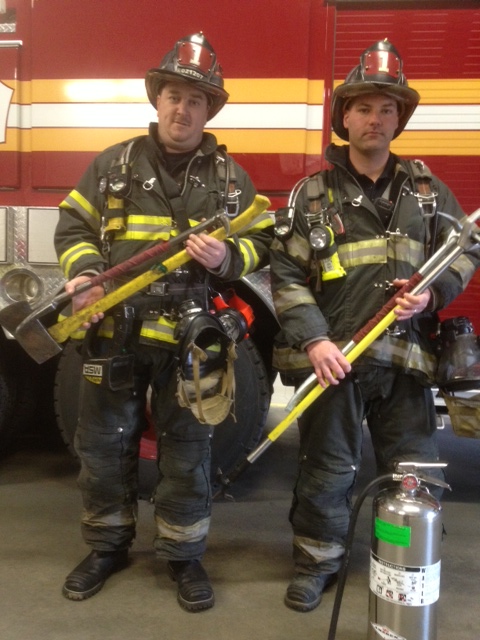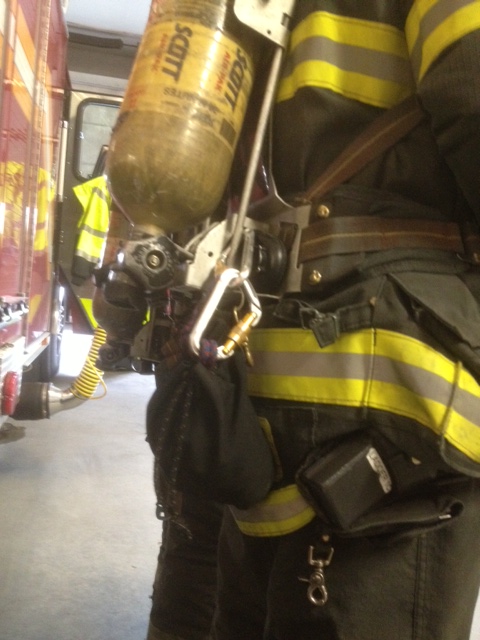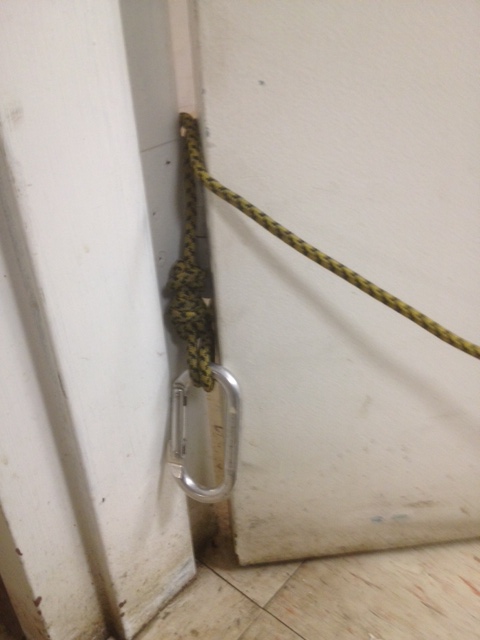Article and photos by David DeStefano
A primary search, one of our most important fireground operations, is conducted while suppression efforts are beginning in the areas nearest the seat of the fire that are most likely to contain viable human life. We know that the primary search on the fire floor begins closest to the seat of the fire with firefighters working their way outward. Often, members performing the primary search are able to pinpoint the seat of the fire for an advancing engine company, if it is not immediately obvious.
Search team members should equip themselves with a variety of primary tools that are job-specific but not so cumbersome that they will impede search efforts. Most fire departments specify these in a policy or guide. However, it is important to know why each tool is selected, as well as multiple uses for the tool during search and rescue operations. Too often, firefighters find themselves “going through the motions,” carrying assigned tools without a clear understanding of why they are so important.
This article is tailored to search and rescue operations in single and small multi-dwellings that are the “bread and butter” of many fire departments throughout the nation. Many small- and mid-sized departments begin the primary search with two members of the first-in truck company. These members searching the fire floor will benefit from the following items:
- Provide a portable radio for each member set to the correct fireground channel.
- Each member should be equipped with a least two sources of light. One should be a powerful handlight on a strap that is easily removable from your body. This light may be secured around the hinges of a door or top rung of a ladder as a point of orientation when searching a room. It also may be placed on the floor to provide a beam of light where smoke may be the thinnest. A firefighter may be able to scan the floor in front of him by placing his face down next to it. This may aid in locating a victim or hazard nearby.
- A thermal imager is invaluable in making a good search effort more efficient. Rooms may be scanned from the door then followed up with a physical search. Firefighters must remember NOT to rely solely on the imager for orientation or hazard identification.
- Search team members must have various door control devices available. Based on the situation, some doors may need to be kept open with a chock or hinge device. Other doors should be closed but kept from latching by using latch strap. A short length of rope or webbing should also be part of each firefighter’s personal equipment to control the opening of doors that need to be forced at the fire room(s).
- A search team must equip itself to provide the necessary forcible entry to the fire area. In single-family and small multi-dwellings, conventional forcible entry tools like a halligan and flathead or maul ax are generally sufficient. As perhaps the most versatile tool on the fireground, the halligan may be employed to probe ahead in search, provide access and emergency egress, and help breach the interior wall systems common in these dwellings. The weight of the tool will also help firefighters vent as they go, taking out window glass and frames to provide maximum egress if needed. In the hands of proficient firefighters, a halligan in combination with a striking tool firefighters will provide access and egress to virtually any area.
- Along with forcible-entry capabilities, the search team may need a longer tool to probe the floor ahead for structural integrity, layout, or debris. A six-foot hook works well in most single and small multi-dwellings. This tool can also be used to take out windows while maintaining a lower position. Members advancing for a search can use a hook in a smoke-filled environment to check for high ceilings that may mask true heat and fire conditions.
- A personal search rope is a tool not always deployed for primary search in smaller dwellings, but making it available adds depth to the resources of a team. A 35- or 40-foot length of rope used to provide orientation to a door or window while making a rapid search of a room under severe conditions will enhance safety and efficiency. Firefighters must be sure that their personal ropes are stowed for easy deployment and are securely anchored to both a fixed object and themselves.
It should be noted that the primary-search tools referenced here have many uses beyond the scope of this article. The purpose here is to inform and remind firefighters of the importance of basic tools in the primary-search mode. With an understanding of how, when, and why primary searches are conducted, the necessity of primary search tools becomes evident. As an aggressive tactic to save lives undertaken before the fire is under control, firefighters must not begin this operation unless they are properly outfitted for the challenges they may encounter. Always remember the primary tools for a primary search.

(1) In addition to personal equipment, the search team must have a thermal imager, forcible entry tools, and a hook.

(2) Truck company members equipped for primary search operations in a private dwelling.

(3) A personal search rope should be secured to firefighter in order to avoid losing the line when deployed.

(4) Various door control devices should be carried by all members conducting a primary search.

(5) A personal search rope anchored through a door hinge to provide a rapid path to egress when conducting a primary search under severe conditions.
 David DeStefano is a 23-year veteran of the North Providence (RI) Fire Department, where he serves as a lieutenant in Ladder Co. 1. He previously served as a lieutenant in Engine 3 and was a firefighter in Ladder 1. He teaches a variety of topics for the Rhode Island Fire Academy. He can be reached at dmd2334@cox.net.
David DeStefano is a 23-year veteran of the North Providence (RI) Fire Department, where he serves as a lieutenant in Ladder Co. 1. He previously served as a lieutenant in Engine 3 and was a firefighter in Ladder 1. He teaches a variety of topics for the Rhode Island Fire Academy. He can be reached at dmd2334@cox.net.
MORE ON THE LINE

